Tourist Places in DharmavaramDharmavaram, a charming hamlet tucked away in the southern Indian state of Andhra Pradesh, is a hidden gem bursting with historical significance and scenic beauty. Dharmavaram, a destination renowned for its vibrant traditions and extensive history, offers a seductive fusion of historical sites, religious landmarks, and gorgeous landscapes that appeal to many tourists' interests. The historical importance of this lovely location as a center for silk weaving and its connection to traditional Kanchipuram sarees are both celebrated. The prestigious Lepakshi Emporium, the focal point of the community, is where talented artisans painstakingly create magnificent silk sarees in high demand across the country. Dharmavaram is also very spiritual, with many historic temples that interest pilgrims and history buffs. The well-known Veerabhadra Swamy Temple, which has elaborate sculptures that tell mythical tales, is a monument to brilliant architectural design. The alluring Penna Ahobilam Wildlife Sanctuary provides a tranquil escape into lush vegetation and the opportunity to view a variety of flora and wildlife for nature lovers. For those looking for an off-the-beaten-path adventure in India, Dharmavaram offers an educational and aesthetically fascinating journey as its cultural tapestry and scenic treasures are revealed. Here is the list of top tourist places: 1. Sri Lakshmi Chennakesava Swamy TempleOne of Dharmavaram's most well-known and historic temples is the Sri Lakshmi Chennakesava Swamy Temple. This Vishnu-dedicated Temple is renowned for its exquisite sculptures and lovely architecture. A well-known festival named "Brahmotsavam" is additionally held annually at the Temple. Lakshmi Devi and Lord Chenna Kesava Swami are present in this Temple. Lord Maha Vishnu allegedly killed the demon "Kesi," according to Vishnupurana. The Lord then made Kesava Swami available. Lakshmi Devi is a deity that resides in the Garbhalayam Vakshasthala of the idol Lord Chenna Kesava Swami. In the upper area of the Temple, there are pictures of Maha Vishnu's Dasavataras. 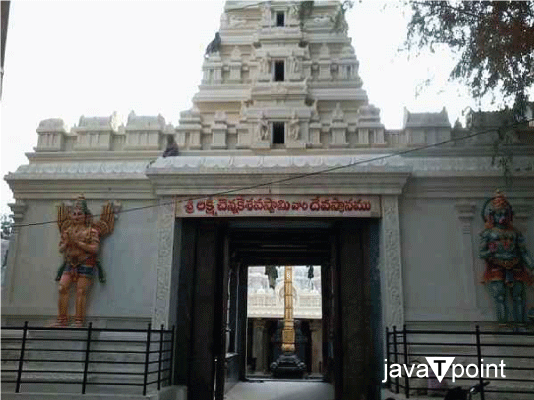
In the eleventh century, Kriyasaktiodayara constructed this Temple. The Temple considered more than 500 years old, was constructed under the rule of the Vijayanagara Empire. The Temple's design combines Chola and Vijayanagara architectural elements. The Brahmotsavam festival, often in March or April, is the ideal time to visit Sri Lakshmi Chennakesava Swamy Temple. The Temple is conveniently close to a road in the city's center. 2. Madakasira FortThe Madakasira town of the Sri Sathya Sai district in Andhra Pradesh, India, is home to the hill fort Madakasira Fort, often called Simhagiri. It is a Monument of National Importance, according to the Indian government. Seven gates are among the fort's numerous buildings and tunnels. A number of these buildings, including temples and the Hinduraya well, were built by Murari Rao. Additionally, he constructed the Singe-moothi hilltop structure, which has four pillars and a large bell. The hilltop houses the Rani Mahal mansion, a horse barn, a gym, and food storage facilities. The fort is reminiscent of the breathtaking and incomprehensible vistas seen in Disney films, and from one side, it seems like a sleeping lion. This is because the castle was built on a hill, and each of its four sides resembled the strong legs of a lion. 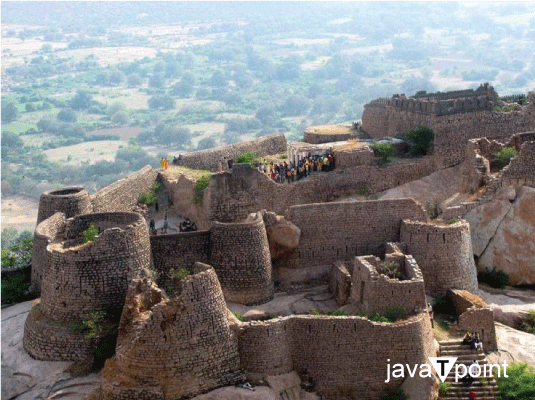
The fort's wall also has a little inward bend as it approaches the top, making it appear like a regal lion's mane. The fort is thought to have been constructed in the 12th century by the Yadava Dynasty. It functioned as a stronghold during the rule of the Cholas, the Vijayanagara Empire, and the Hyderabad State. The ruling dynasty benefited greatly from its advantageous location and strong defenses. As a result, the fort became a frequent target of military operations and was frequently used as a negotiating chip in political negotiations. Ramasagar and Rapthadu, two reservoirs, serve as the fort's water sources. The Vijayanagara kings built these reservoirs to ensure there would always be water for the fort and the Temple. The same kings also constructed the two nearby ponds to supply water for the Temple's daily needs. A superb example of historic architecture that has stood the test of time is the Madakasira Fort. This beautiful fort pays homage to the empires in power when it was built, and the elaborate masonry work and monumental engineering of the reservoirs are evidence of the time's high standard of craftsmanship. The fort has shown to be resilient, standing for hundreds of years despite the effects of time and the environment. It is a genuinely amazing and mind-blowing period of history. 3. Nimmalakunta Leather Pupprtry CraftA traditional type of folk art in Andhra Pradesh, leather puppetry is noteworthy for being practiced in the distant village of Nimmalakunta in the Dharmavaram Mandal. This town has produced a large number of remarkable puppetry artists. The traditional cultural Art of the area, Tholu Bommalata, gave this work of Art its well-known moniker. When creating models and puppets, emphasis is placed on Indian epics such as the Ramayana, Mahabharata, and Bhagavad Gita. These handcrafted products are primarily constructed using goat leather. The primary explanation is that this Art is typically created utilizing materials readily available in nature, natural dyes for the colors, and iron frames. Artists create this fine Art using traditional techniques and expert craftsmanship by drawing pictures and designs on leather and then dying with lovely colors. Leather is carved, crafted, and designed in such a way as to resemble living creatures. 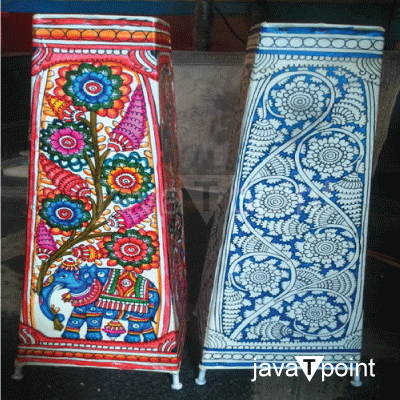
The things this craft produces nowadays include lamp shades, paintings, wall hangings, door hangings, partitions, and contemporary puppets, all widely employed in interior design. The artists in this village also use Western design techniques with visitors who frequently visit surrounding pilgrimage sites in mind. This craft derives from the "Tholu Bommalata" Art, a traditional cultural art form in the area. This craft's background is derived from the traditional Art it is made from because that is the only source of the materials used. In Andhra Pradesh, the "Tholu Bommalata" art form has a long history. Around 700 years ago, individuals who left the state of Maharashtra adopted this folk art. This unique Art was shown in the streets when no dramas or movies were available for amusement. The epic theme ran throughout the entire night while this play was performed. The Kings at that time respected and supported this Art. At that time, Maharashtra, the state, was particularly well-known for this Flok Art. People reliant on this Art then moved as gypsies to the states of Andhra Pradesh and several districts of Karnataka and played Tholu Bommalata in the rural. This was due to several causes. DCH, an organization, and certain designers have helped the craftspeople. They have begun creating and marketing products, including lamps, paintings, and wall hangings. One of India's most well-known crafts has gradually grown in popularity. 4. Sri Vasavi Kanyaka Parmeswari TempleSeveral ancient religious literature references the revered Sri Vasavi Kanyaka Parameswari shrine. A tale claims that Vasavi Kanyaka Parmeswari was well known for her beauty. The revered Temple houses Mother Kanyaka parameswari, Mahishasuramardini, and Sri Nagareswaraswamy. The Temple is oriented toward the east, and a tall tower atop the broad mahadwara beckons visitors with its lovely sculptures adorning it from top to bottom and on all four sides. The Temple was built strictly by Vastu Sastra, and as such, it has sturdy prayers, tall gopuras, spacious courtyards, numerous ministries, vast garbage has, grand mukhamandapas, etc. The office space, chicken coop, and staff housing are all housed in several structures in the spacious courtyard in front of the structure. Along with the finely crafted, colorful sculptures of Mother Kanyakaparameswari standing in a fire pit with her parents by her side and a stunning mirror house, the second Prakara also contains numerous mandapams with lovely deities like Vinayaka, Navagrahas, Lord Venkateswara, and Kaala Bhairava. The garbha griha of Nagareswaraswamy is fairly roomy, immaculate, and elegantly designed, including the elevated vedh for the lingam in the center. As soon as they catch sight of the magnificent ling set on a wide, high pedestal decorated with colorful garlands and triple lines set with diamonds, devotees immediately lift their hands in adoration. Then, momentarily be carried away to Kailas. Its advantages include its size and shine. The two other garbha grahams, Mahishasuramardhini and Vasavamba, are magnificent and mesmerizing admirers with their sparkling gems and vibrant attire. 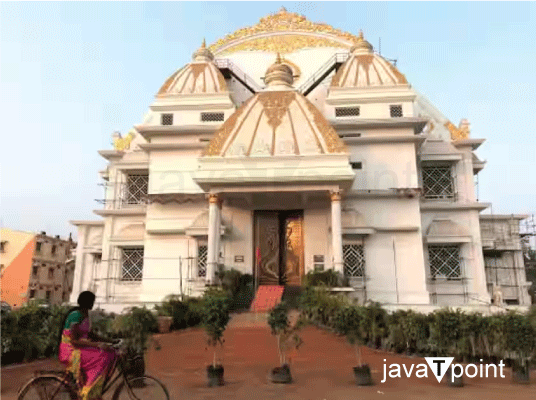
A single darshan makes a lasting effect on the devotees' minds and beckons them back time and time again. The mighty Chalukya king Vishnuvardhana is said to have ruled Andhra in the 11th century CE. At this time, Kusuma Sreshti, a well-known Vaishya, resided in Penugonda, part of the king's realm. The king treated the man as a chieftain because of his wisdom. The merchant prayed to Virupaksha because he was childless, and he was granted a son, Virupaksha, as well as a daughter, Vasavi, who grew up to be a beautiful and pious girl. The monarch was drawn to her and wanted to marry her. Even though her parents opposed the union, they could not stop the monarch from having his way. The bride, her parents, and the 102 gotra leaders in the community demonstrated their opposition on the wedding day by jumping into the homam fire as part of the agni pravesham ritual. At Penugonda, Vasavi's soul was purified and given deity status when she passed away. The story exemplifies the Hindu idea of ritual defilement because Vasavi, who was already married and belonged to a different varna than the king, decides to commit suicide rather than be forced to wed him. 5. Sri Shirdi Baba Temple on the banks of Town LakeThis Temple may be found in the Andhra Pradesh town of Dharmavaram in Sai Nagar along the Puttaparthi main road. The Temple is located across the street from Jawahar English Medium School, and it can be reached by foot from the Dharmavaram RTC Bus Stop in about 5 minutes. 1993 saw the official registration of The Temple Trust. 1998 marked the year of the Temple Bhoomi Pooja. On a sizable 2.7 acres of privately owned land that the Temple Trust bought, the Temple is situated. On April 22, 1999, in front of the Trust Members and a sizable gathering of local Sai Devotees, His Holiness Sri. Narasimha Baba of Karur, Tamil Nadu, inaugurated the Temple. The Temple's first president, Shri. E. Narayana Reddy served as founder. The temple trust handles the daily operations and overall growth of the Temple. In the Sanctum Sanctorum of the Temple, there is a stunning 5.5-foot-tall marble idol of Shirdi Saibaba. 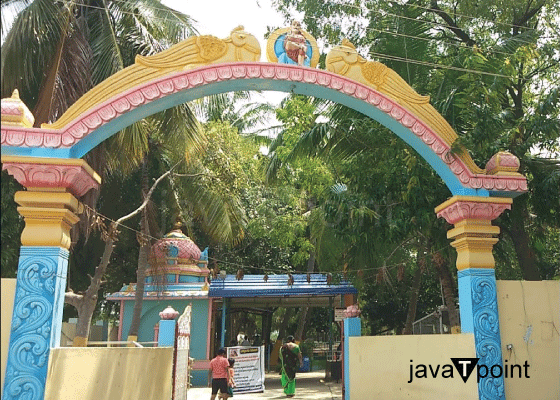
Like Shirdi, a marble Nandi idol is directly across from a Sai Baba idol. A lovely picture of Sai Baba is displayed on a wooden swing close to the Nandi idol. Saibaba's Pancha Loha Idol is positioned on a three-step pedestal to the right of the main idol. The main Temple also has a wooden palanquin used for the palanquin procession on Thursdays and other festival days. Separately erected in little shrines on either side of the main Temple are marble statues of Ganesha and Dattatreya. The sacred Dhuni is in the Dining Hall next to Dwarakamai, across from the main Temple. In the area across from the Dhuni are life-size photographs of Dwarakamai Saibaba, Marble Padukas, Marble Tortoises, and Handmill. Near the temple office, where a life-size picture of Sai Baba sitting on a stone is located, is where Chavadi is located. In Chavadi, there is also a wooden chair and cot. The meditation room has a 3-foot-tall Dwarakamai Saibaba marble idol. Near the Mandir's entrance is a 5-foot black stone statue of Hanuman. Within the Temple's walls, a marble statue of Dattatreya has been placed beneath the sacred neem tree. A marble Nandi idol and marble padukas are next to the Dattatreya idol. On the right side of the main Temple is a dining hall that bears the name "K.V. Ramani Block" in honor of Shri. K. V. Ramani, a generous Sai devotee from Chennai. The Temple Premises include a free nursing home and an orphanage administered by the Temple Trust. 6. Gagan Mahal PalaceThe Department of Archeology and Museums has given the storied Gagan Mahal in Penukonda, built during the Vijayanagar period and serving as Emperor Sri Krishna Devaraya's second capital, a makeover and restored it to its former glory, giving it an eye-catching appearance. Previously in disrepair, the palace is now a popular tourist destination and is included in the Tourism department's tourism circuit. With the aid of Tamil Naduese architects, the department has recaptured its former splendor. According to legend, the stunning royal dancer Gangamma made Gagan Mahal her home to entertain the visiting kings and nobles. The Gagan Mahal's architecture, a fusion of Hindu and Persian styles, is currently being rebuilt by the Department of Archaeology without detracting from its unique grandeur. Gagan Mahal, which formerly resembled the gloomy, haunted palace depicted in horror films, now holds a photo exhibition that details the history of Penukonda, the famous emperor's second capital. 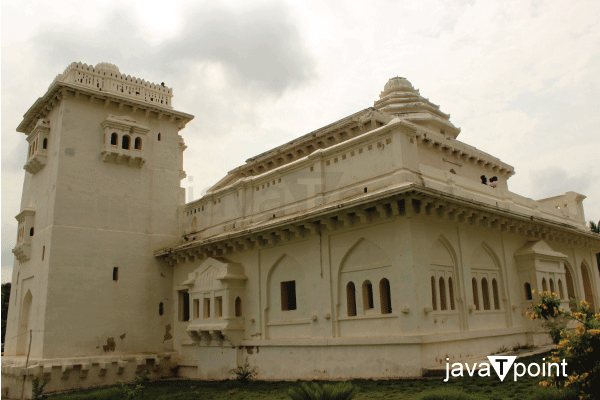
The locals claim the palace is now an excellent location for movie shoots. During the Vijayanagar era, the palace received several new religious constructions. The residents of Penukonda, who take great pride in their rich cultural and political legacy, are saddened by the Central and State administrations' complete disregard for the old town. 7. ISKCON Anantpur TempleThe ISKCON temple in Anantpur is equally as stunning as those that have been constructed throughout the world. The Temple is fashioned like a chariot drawn by horses and contains four gigantic horse statues at the entrance. The Radha Parthasarathi Temple was established in February 2008 and is recognized by this name. The magnificent ISKCON Temple is on the city's outskirts, in the village of Somaladoddi. 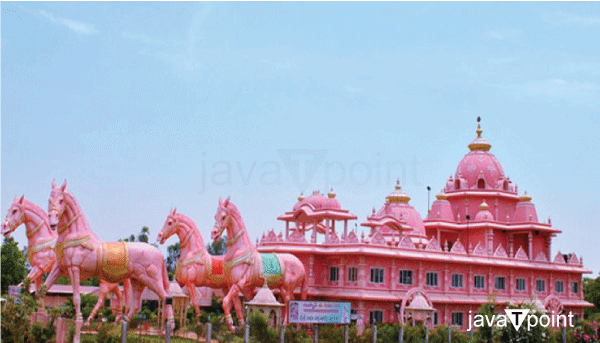
The Temple is devoted to Lord Krishna and is concentrated on 'Krishna Consciousness', the idea that Lord Krishna is the ultimate power and superior to all others. A restaurant is connected to the Temple. When lights illuminate the Temple's walls at night, it appears even more dazzling. The most revered occasion is Janmashtami, which honors the birth of Lord Krishna. Anantpur Bus Station is the closest bus station. Buses from all the main cities routinely arrive here. Anantpur Railway Station and Puttaparthi Airport are the closest stations and airports. 8. Gooty FortThis location was formerly known as Gowthampuri and then changed its name to Gooty. The earliest writings on the fort's walls date to the seventh century. According to the inscriptions, the location was known as Gadha, which is Sanskrit for "fort," however, a Bukkaraya inscription refers to it as "King of Forts." One of Andhra Pradesh's oldest hill forts is Gooty Fort. The domes of the fort were built using fine stone, mortar, and lime to ensure sustainability. This shell-shaped fort is made up of 15 smaller forts with various entrances. An outwall connects all of the entrances to the smaller forts with bastions. The fort also has two large structures; one of them is a gym, and the other is a barrack. 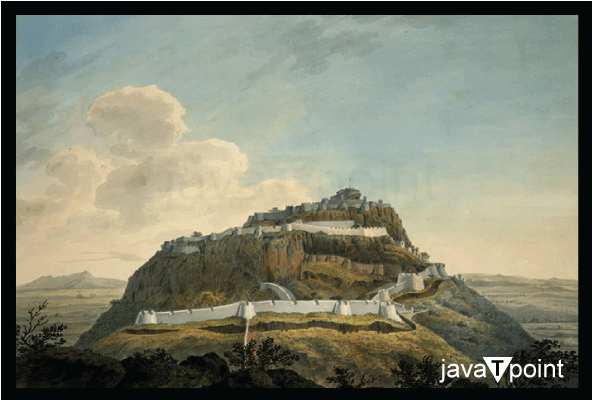
A polished limestone building perched on the cliff's edge serves as Morari Rao's throne. In the construction of the Gooty Fort, Hindu and Islamic influences mix. The top of the hill became the site of numerous wells. The fort contains several temples dedicated to Lakshmi Narasimha, Nageswara Swami, Hanuman, Jyothimma, and Ramaswamy. A Dargah is also located inside the defense. The upper level of the fort has several decrepit buildings. 9. Akka Mahadevi CavesIf you're looking for adventure, Akkamahadevi Caves in Srisailam are the finest spot. A well-known Hindu sanctuary to Lord Shiva is located in these caves. The Akkamahadevi Caves, which are close to the Krishna River, were created naturally. The Akkamahadevi Caves offer an enthralling natural beauty, a serene setting, and a little adventure. The Akkamahadevi caverns are among the most fascinating of all the naturally created caves in the Nallamala hill ranges, but there are many of them. One of the highlights of Srisailam tourism is a visit to Akka Mahadevi Caves. Because these caverns are in the jungle, visitors must first take a boat ride from Patala Ganga and a little hike. Traveling by boat through the River Krishna takes around an hour to reach the caves. A tranquil boat journey with a calm expanse of water all around you is a memory to treasure. If you want to do something peaceful, this is the best option. When the boat is anchored close to the cave's mouth, a sizable arch that was naturally constructed is visible. You must spend about 10 minutes navigating a challenging path to get to the cave. 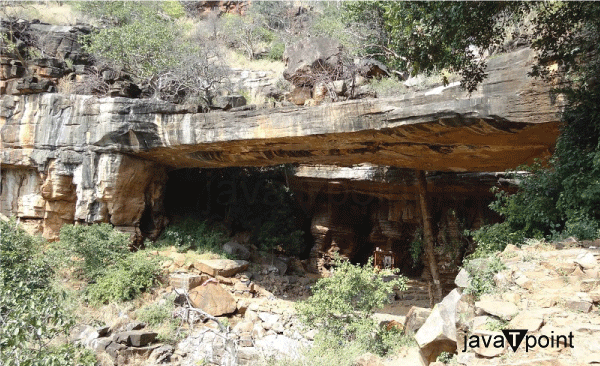
The depth of the caves is about 150 meters. As you enter and go inside Akkamahadevi Caves, the darkness grows. Since there is no light inside the caves, visitors must take care while walking. Small torches are typically used for lighting. As one enters the cave further, its width likewise gets smaller. The naturally created Shiva lingam is located at the end of the short tunnel. The path to the Shiva lingam is small and only 3 feet tall. Travelers must stoop and crawl to get to the holy Shivalingam at the end of the tunnel. After Akka Mahadevi, a revered saint and philosopher from the 12th century, the Akkamahadevi caves were given their name. She is linked to the Veerashaiva Bhakti movement and is credited with significantly contributing to the movement and Kannada Bhakti literature. In these cases, she has atoned for her sins. Akkamahadevi is said to have prayed to the Shivalingam inside the cave. Akkamahadevi Caves can be reached in two different ways. Most people who visit these caverns do so from Patala Ganga. Tickets for boat journeys to the caves are available at the ropeway center at the Haritha Hotel, which is close to the Patala Ganga entrance. Akkamahadevi Caves can also be reached through a 5 km long dirt road that can be reached from Hyderabad-Srisailam Road. This mud roadway, typically inaccessible during monsoon, can only be driven on by high-clearance vehicles. ConclusionIn conclusion, Dharmavaram is one of India's undiscovered tourism gems. It is an interesting destination because of its rich cultural legacy, historical significance, and natural beauty. Dharmavaram offers various activities for visitors, from the intricate silk weaving traditions at the Silk City to the spiritual consolation found at the Sri Lakshmi Chennakesava Swamy Temple. The friendly residents of the village and their gracious welcome only add to this destination's allure. Dharmavaram has something to offer everyone, whether looking for a look into India's textile legacy, a spiritual retreat, or just a peaceful getaway from the rush and bustle of modern life. The breathtaking scenery, abundant vegetation, and tranquil mood make the perfect environment for rest and renewal. Additionally, Lepakshi, Puttaparthi, and the Nallamala Forest are nearby, adding to the appeal of Dharmavaram and making it a great starting point for exploring the region. You'll leave Dharmavaram with a deep appreciation for its wide variety of experiences as you immerse yourself in the vibrant culture, indulge in the wonderful cuisine, and take in the architectural marvels. As a result, Dharmavaram should unquestionably be on your travel itinerary if you're looking for a lesser-known Indian location rich in history and culture.
Next TopicTourist Places In Garhbeta
|
 For Videos Join Our Youtube Channel: Join Now
For Videos Join Our Youtube Channel: Join Now
Feedback
- Send your Feedback to [email protected]
Help Others, Please Share









